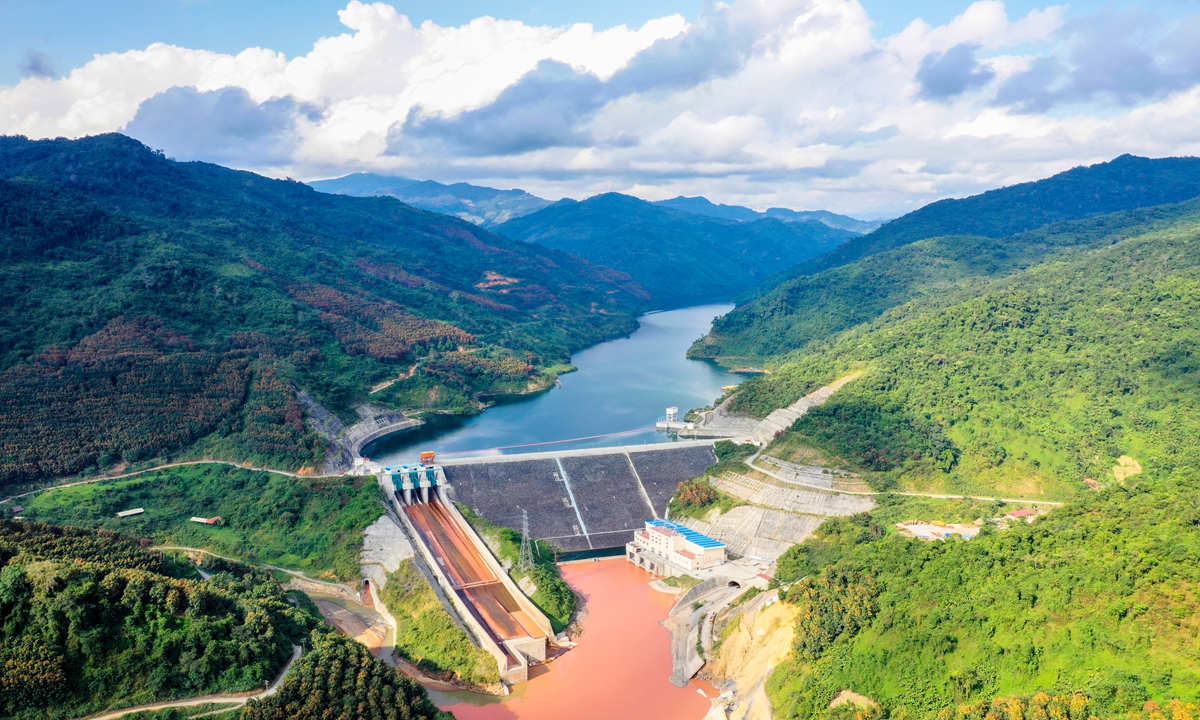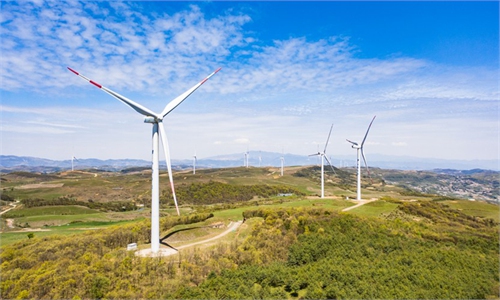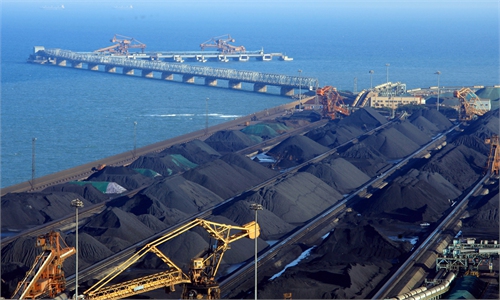China's technological, financial strength offers BRI countries a faster industry transformation toward green development
China’s technological, financial strength offers possibilities for a faster industrial transformation across developing countries

Nam Ou 6 hydropower plant of the Nam Ou River Cascade Hydropower Project in Laos Photo: Courtesy of PowerChina
When the topic of climate change has once again come to the fore during the COP26 UN Climate Change Conference, held in the UK for two weeks, China's consistent efforts on carbon reduction have captured the world attention and won the applauds for its carbon neutrality goal that is pledged to achieve carbon peak by 2030, and carbon neutrality by 2050.
China's commitment has made not only in responding to its own development needs but also that of many other countries, especially developing nations along the Belt and Road that that are lagging behind due to the lack of technological, financial and production capacity. The developing nations need to spark an upgrade of core industries.
On the sideline of the COP26 meeting in Glasgow, China's commitment to carbon reduction received acknowledgement from attendees. The British Prime Minister Boris Johnson also expressed in his remarks gratitude to China for the country's substantial commitment to combating climate change, according to Sputnik's report. China's pledge to stop building new coal-fired power projects abroad, which has already begun to move the needle across the entire Asia-Pacific region, and has also been used as an example for China's active commitment on tackling climate change..
With energy cooperation becoming a key area in the joint construction of the Belt and Road in the eight years since it was put forward, China has actively built energy partnerships and promoted energy green and low-carbon cooperation, experts have said. This is particularly significant given that Belt and Road countries account for 60 percent of the world's carbon emissions, public information shows.
Green revolution
In addition to the commitments made by Chinese leadership, plans have already been put into force responding to the need for developing countries to achieve self-reliance on energy supplies for sustainable growth.
"At present, the global response to climate change has entered a new stage. With the emergence of a new era of scientific and technological breakthroughs, energy reform driven by technological innovation and low-carbon is advancing rapidly. The advancing reform has already found its roots in many Belt and Road countries as an important part of Chinese cooperative projects overseas," Wang Yongzhong, head of the Institute of World Economics and Politics under the Chinese Academy of Social Sciences, told the Global Times.
The outcome of the broad layout of green energy projects ranging from wind power to solar and hydropower under the direct support of Chinese companies has enabled some developing countries to fast-track their progress toward low-carbon and sustainable development.
One good example is Argentina's largest photovoltaic project - the 315 MW photovoltaic power plant in Jujuy Province, developed by the Power Construction Corporation of China, or PowerChina, a leading player in global electricity generation, which has allowed more people to use clean electricity, and has become a benchmark for China-Argentina green energy cooperation.
Since the power station officially entered commercial operation in September last year, the current operation is very stable. The project is able to meet the electricity needs of 100,000 residents, reduce carbon dioxide emissions by over 325,000 tons per year, and generate more than $50 million in revenue for the Argentine government every year, according to the company.
Currently, PowerChina has 232 overseas offices in 46 of the 65 key countries along the Belt and Road. So far, the total installed capacity of power and energy projects undertaken by PowerChina overseas has reached 230 million kilowatts, benefiting more than 1 billion people around the world, data that PowerChina sent to the Global Times on Thursday shows.
Similar win-win projects are also being developed in other countries and have received highly positive feedback.
In March 2015, the first shipment of 1 MW solar photovoltaic modules loaded with 6 containers from Yingli Green Energy, a Hebei-based solar panel manufacturer, departed from Zhengzhou, Central China's Henan Province, and arrived in Hamburg, 15 days later via the China-Europe cargo train that runs through Eurasia, marking China's first special photovoltaic train exported to Europe.
Like many other Chinese companies, Yingli Green Energy has been actively exploring the export of China's advanced manufacturing technology and business ideas to the world with impressive results.
"So far, our solar photovoltaic power generation solutions have been distributed in more than a dozen countries along the Belt and Road, including Egypt, Morocco, Algeria, and Pakistan, with the total shipments account for around 30 percent, and the demand is increasing," a representative from Yingli Green Energy told the Global Times.
China is the world's largest manufacturer of green energy equipment such as photovoltaics and wind power and has so far achieved affordable photovoltaic power generation in 80 percent of countries and regions around the world, according to media reports.
Energy is an important point of economic competitiveness for some BRI countries, but it is an area holding back the development of others, experts said.
Strengthening energy cooperation is in the common interests of regional countries and brings important development opportunities to countries in the region. However, the political environment, the huge differences in legal systems and other aspects are also challenges for global energy cooperation to look into in the future.


